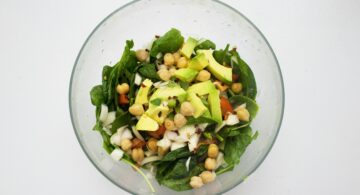10 Food Rules for Better T2D Health
Don’t let the thought of eating less scare you. Once you make the shift to a healthier life, including more nutrient dense food, you will find that you just can’t seem to eat as much or as often as you used to when quality was not an issue. Feeding your body correctly results in a rebalancing which leads to eating less. It is a win-win really!
You will no longer experience the highs and lows in your blood sugar which so often result in what is know as crashing. When you eat food that is not nutrient dense it impacts your blood sugar in such as way as you may have an immediate burst of energy followed by a low period when you become irritable, tired, and quite hungry. This hunger leads you to consume more food, and the whole cycle begins again.
When it Comes to Eating
When it comes to eating, we all have to do it. We all must take in nourishment to sustain the life force within us. Quite simply, without nutrients, we would die. However, what many people don’t realize is that the higher quality nutrients that they consume, the less they have to take in. In other words, consuming foods that do a better job in sustaining us, repairing, and protecting the body creates a more efficient system.
This is the way we are designed to operate. The old saying, “Junk in. Junk out.”is entirely correct. When we pump ourselves full of nutrient-void food, we require quite a bit more of it to derive any benefit at all. Much of what many Americans consume falls into the junk category, even though you may be misled to think that it is quite healthy. Therefore, eating higher quality food is the first key to eating less.
Tips for Choosing Quality Food
With the commercial food market flooded with propaganda, it ‘s hard to know what is real food and what is not. Food manufacturers often put deceptive wording on packages that convey a sense of healthiness when, in fact, nothing about the particular food is healthy.
Author Michael Pollan wrote an incredibly clever book entitled Food Rules: An Eater’s Manual. In this book, Pollan talks about the basics of eating healthy, real food and does a fantastic job outlining the principles that one should stick to when it comes to choosing real nutrient dense food. Here is a snapshot of some of his rules:
1. Eat Mostly Plants, Especially Leaves
Research indicates that a plant-based diet is ideal for managing weight, blood pressure, cholesterol and blood sugar. According to a study of almost 100,000 Seventh-day Adventist church members, which promotes a vegetarian diet), it was found that vegetarians had lower rates of high blood sugar than non-vegetarians. Michael J. Orlich, M.D., an assistant professor of preventative medicine at Loma Linda University in California was involved in the study. He says, ” The closer people follow a vegan diet, the more they stay at a healthy weight and prevent type 2.”
Sharon Palmer, RD, and author of The Plant-Powered Diet says this, ” Study after study has tightly linked eating a plant-based diet with decreasing a number of chronic diseases – type 2 diabetes, heart disease, Alzheimer’s and certain cancers.”
Eating mostly plants does not mean that you have to abandon meat altogether to reap at least some of the benefits. Keep in mind that if you do include meat in your diet, it should be high quality.
2. Eat Animals That Have Eaten Well
While the saying you are what you eat is true, it is also true that you are what you eat has eaten. In other words, if you are eating animals be it meat, seafood or chicken that have not been raised sustainably and are subject to feed that is not in their natural diet, your health will suffer. Choose grass-fed meat, free range poultry, and fresh caught seafood and avoid processed meats of any kind that contain harmful chemicals and have microscopic nutritional value.
3. Eat Your Colors
Pollan makes an excellent point regarding the color of food. The colors found in vegetables are a reflection of the different antioxidant phytochemicals they contain . A significant number of these chemicals can protect us from chronic disease. So, for best protection, keep your plate colorful and choose from a wide variety of vegetables.
4. Avoid White Bread
Eating white bread is as bad as eating a candy bar, maybe worse. Minimizing your consumption of white flour will help your blood sugar balance and keep unwanted sugar crashes at bay. The same goes for enriched pasta, it will just send you skyrocketing and crashing shortly after. Eat whole, real grains in moderation including things like quinoa, oats, barley, millet and brown rice.
5. “Shop the outside aisles of the supermarket”
…says Pollan. Nothing good resides inside the aisles of the supermarket. If you shop at a traditional store, you will see that processed foods are mainly found on the inner aisles. Produce, meat, and dairy are found on the outside edges. If you want real food, stay to the outside edges.
6. Snack on Unprocessed Plant Food
Snacking on unhealthy, processed items only leads to more eating and more eating. Limit your snacks to unprocessed plant food such low sugar fruits, raw nuts, and veggies.
Here are a few more real food rules to consider:
7. Don’t eat anything with three or more ingredients: If your food item has more than five ingredients, it is probably safe to say that it isn’t too real.
8. Don’t eat anything you can’t pronounce: Don’t eat anything that you can’t pronounce. Suffice it to say, if you can’t pronounce it, don’t eat it.
9. Eat plenty of healthy oil/fat: Contrary to what you might think, fat does not make your fat – at least not healthy fat like organic cold pressed coconut oil, avocado oil, organic butter, etc.. Be sure to include plenty of healthy fats in your diet. This will help keep you full longer and also fuel your metabolic furnace. Stay away from hydrogenated or partially hydrogenated oil at all costs.
10. Ditch Sugar: Refined sugar is your enemy. Avoid it at all costs. Stay away from sugary drinks and anything with any added sugar.
Don’t worry, there are lots of great alternative to refined sugar. Try these delicious cookies made with coconut crystals.
Make Good Decisions
Did you know that on average we make about 35,000 decisions each day? These include decisions about what to eat, what to wear, what to believe, what to purchase, etc. It is astounding the number of choices we make, many of them without even thinking. The truth is, every decision we make brings particular consequences – some good and some, unfortunately bad.
Over time, the consequences of our choices begin to accumulate and can take us down different roads. For most of us, our life’s a journey that is peppered with both good and bad choices and our health balance sheet is a reflection of this truth.
Eating less is all about being mindful, being knowledgeable, being prepared and being committed. Each choice we make carries with it a consequence. As Albert Camus said, “Life is a sum of all of your choices. With that, it is important to choose well, choose real and eat food that will bring about healing through rich nourishment. This is the secret to eating less.
CHECK THIS OUT: Want to learn how to use real food to reverse your high blood sugar?



















